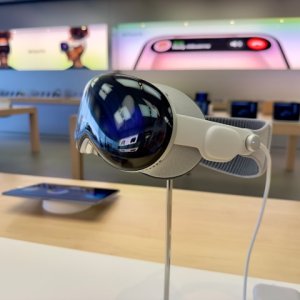
Leveraging Tech to Improve Chronic Disease Diagnosis, Treatment
 By Antonio Gozain | Senior Journalist and Industry Analyst -
Wed, 08/31/2022 - 15:30
By Antonio Gozain | Senior Journalist and Industry Analyst -
Wed, 08/31/2022 - 15:30
Technology and digitization continue advancing rapidly, impacting most aspects of everyday life and all industries, including the healthcare sector. Patients across the world have benefited from tech, from software and medical equipment to personal medical devices to monitor their vitals. While these devices have proven effective in the diagnosis and treatment of chronic diseases, democratization and availability remain the main challenge that the Mexican healthcare system faces, agreed industry experts.
“Prevention and technology penetration in Mexico face several barriers. The country has a severe inequality in education, access and financing. Healtech implementation is very difficult and there is a considerable lag in democratization. Only a small group of people can access innovations,” said Gerardo Jiménez, CEO, Genómica Médica.
Worldwide, health systems face several difficulties managing chronic diseases. Globally, 537 million adults have diabetes and this number is expected to increase to 643 million by the next decade. These large numbers of patients cost global health systems US$966 billion in health expenditure, according to IDF Diabetes Atlas. In Mexico, the most common and costly chronic diseases are diabetes and high blood pressure, which often derive in kidney failure. In 2019 (pre-pandemic figures), the IMSS spent MX$77.5 billion (US$3.9 billion) treating these diseases, reported Forbes.
Treatment for diabetes, which “is a data disease par excellence,” required innovation several years ago, said María Salido, Co-Founder and CEO, Social Diabetes. “There is no health system that can be next to the patient the entire time. Patients have to be co-responsible for their health. We must put the patient at the center and provide them with the tools to self-manage and generate enough data to make the smartest decisions.”
SocialDiabetes is a Medical digital platform that delivers personalized care and optimized outcomes. With over 500,000 users, SocialDiabetes is considered a digital therapy tool that provides efficient diabetes management at scale. The mobile application integrates with devices and supports decision-making, helping patients control their diabetes through the measurement of sugar levels and other critical indicators.
An optimal treatment that heavily involves patient participation results in a better life and becomes less costly to the healthcare system. For that reason, P4 medicine (participatory, personalized, predictive and preventive) is set to transform the health sector, said Natalia Díaz, Head of Nutrition, NutriADN.
Through technology, prediction becomes possible, genetic risks for many diseases can be identified and signs of illness can be recognized before manifesting. Through prevention, individuals are given the tools to recognize the earliest signs of disease, when it is the easiest to treat. Personalization represents the focus of care on the individual and the optimization of wellness by predicting disease and designing tailored treatments to prevent it. Finally, participatory means that patients are well informed about their health and better prepared to make decisions about it.
Although technology helps throughout the entire patient journey, from prevention to treatment, it is still far from being available to everyone. In addition to the inequity that prevails in Mexico, “innovations must adapt to the target market in terms of speed of results, costs and need of guidance,” said Jiménez. Mexico needs a public policy that stimulates scientific and technological innovation to prevent national health problems, fostering the appropriate implementation according to local needs, he added.
Genómica Médica offers saliva-based DNA tests for risk assessment of common diseases, prediction of responses to common medications and diagnosis of genetic diseases. “We sequence DNA to offer personalized recommendations for prevention and treatment of those diseases. Mexico should leverage the technologies that people already understand to bring value to the patient,” said Jiménez.
Technology, devices and products must adapt to the different markets they are directed to, said Jaen Velázquez, Head of Business Development, Siemens Healthineers. “We bring this innovation to Mexico, but we cannot stop there. We focus on the patients, change and adapt our products to make them more patient-friendly. Tech has completely changed and we have become part of the patient journey,” he added.
Technology firms such as Siemens Healthineers team up with diagnostics laboratories and several actors of the healthcare ecosystem to build digital solutions to reduce diagnostic costs. “We must work together through alliances to improve patients’ lives. The point is to make the cutting-edge technology that already exists available for everyone,” said Velázquez.
While technology is already available, it remains far from full democratization but only patients themselves will change this, said Javier Pico, Partner, Life Sciences Consultants. “Citizens, people become the best agents of change by demanding health services and forcing public and private systems or even their families to change habits, from their daily diets to the healthcare culture and approach.”
















